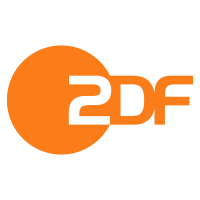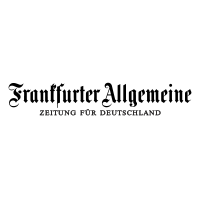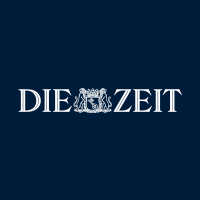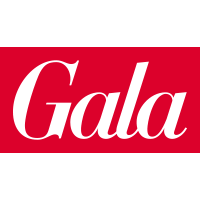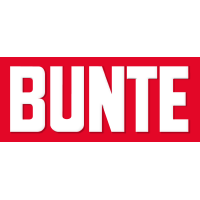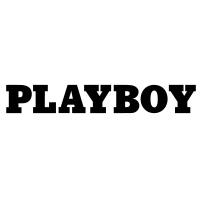
Internationally renowned
Top Specialist
★★★★★
Prof. asoc. Dr. Stefan Gress
Plastic & Aesthetic Surgeon
Rhinoplasty
(Correction of the Nose)
The nose is of central significance for the appearance of the face. It divides the face into two halves and substantially determines the profile.


Everything important at a glance
Rhinoplasty
Duration of surgery
2 – 2,5 hours
Anesthesia
General anesthesia
Surgery
Outpatient in the practice’s operating room
Preparation before surgery
ECG and blood values for anesthesia 10 days before surgery, do not take aspirin for 14 days beforehand
Follow-up treatment
Gypsum change after 1 week, 12 days Gypsum in total
Convalescence period
2 weeks
Costs
3,000 – 8,000 euros net (depending on the complexity of the surgery) on presentation of a medical certificate

Over 12,500 operations in total
★★★★★
Over 30 years of experience
★★★★★
Scientific Frontrunner



Professor
of Plastic Surgery
Prof. Gress is a member of numerous professional societies.
It goes without saying that Prof. Gress actively participates in the most renowned specialist congresses worldwide and organizes and conducts his own teaching events and lectures, in particular to ensure the highest international standards for surgical and treatment techniques, the »State of the art«.

Important information
Rhinoplasty

Why?
There are few parts of our body that hold such divergent attributes and meanings as the nose: It serves as a source of inspiration for painters and poets, a focus of countless paintings and pictures, fairy tales and stories. It is admired and ridiculed. Some even claim you can read a person’s character by their nose. A nose correction with Prof. Gress in Munich will give you the nose you have always wanted.
Aesthetic surgery of the nose, also known as rhinoplasty, aims to improve not only the appearance of your nose but also the harmony of your entire face by changing the shape and/or size of your nose.
The success of an aesthetic nose correction, i.e. one that improves its shape, depends on many factors. Above all, the skill and experience of the surgeon should match the patient’s expectations for the result.

Preparation
You will have a consultation at our clinic in Munich before the procedure. Prof. Gress will take sufficient time with you; most of all, he is interested in learning about your desired outcome for the procedure. The function and shape of your nose will be examined and documented and the surgical procedure discussed with you.
Because the procedure is performed under general anesthesia, medical preparation is necessary, including blood count and ECG. No blood-thinning medication (aspirin, Marcumar etc.) is permitted 14 days before the operation!
The surgery
The procedure is performed under general anesthesia. A small, step-shaped incision at the bridge of the nose (columella) allows the skin of the nose to be folded upward, so that cartilage and the nasal bone are visible. The cartilage and bone are then modified to produce the shape and size of the desired nose, and the skin is folded down. A cast and a tamponade stabilize the nose.


Afterwards
Generally, a nose cast is worn for 12 days, the stitches removed after five days. The nasal tamponade is removed the day after the operation. Cooling.
Do not touch the nose initially after the procedure and avoid contact sports. Your nose can have a “furry” feeling for up to a year and also be slightly swollen for that long. As a rule, no changes occur after one year. Any bruising disappears after about 14 days. See below for more details.
Images
The presentation of before/after pictures on the Internet is prohibited in Germany for aesthetic operations, so we only show pictures of medically indicated treatments here. Please understand that we may only show you pictures during a personal consultation.
Examples of medically indicated nose corrections:



FAQ / Questions and Answers
At what age can I have aesthetic rhinoplasty done?
Aesthetic rhinoplasty is performed in nearly all age groups.
In young patients, the nose should have largely stopped growing, which is usually the case after 15 or 16 years of age. There is no upper age limit for rhinoplasty, provided that there are no health concerns.
Will I need to stay at the hospital?
Most rhinoplasty procedures can be performed on an outpatient basis if you have someone to take care of you at home. Complex and lengthy surgeries should be done in an inpatient setting. We will make this decision together with you during the consultation.
How long does the procedure take and what costs can be expected?
Depending on what needs to be corrected, rhinoplasty takes 1 to 4 hours.
Depending on the complexity of the surgery, the fees range between EUR 2,000 and EUR 4,000, plus anaesthesia and inpatient stay, if required. If the surgery is purely cosmetic (no medical indication), VAT of 19% is added to the costs.
We will be happy to find the optimum financing option for you together with our partner MEDIPAY. In the case of pelvic floor tightening, anaesthetist fees and costs for the hospital stay are charged in addition.
Where will the incisions be made?
In general, there are two ways of approaching the framework of the nose:
One way is to make all incisions inside the nostrils without lifting off the layer of skin that covers the nose; this is referred to as “closed rhinoplasty”..
By contrast, in “open rhinoplasty”, a small additional incision is made at the bridge between the nostrils (columella), providing the advantage of being able to lift off the layer of skin that covers the nose. This makes the procedure much easier for the surgeon by allowing a direct view of the framework of the nose while shaping it. The small incision at the bridge between the nostrils usually heals without being noticeable.
To reduce the size of the nostrils or to narrow the base of the nose, an incision at the alar base may be necessary.
What type of anaesthesia is used?
The choice of anaesthesia depends on the scope and expected length of the surgery as well as the overall state of health and personal preference of the patient.
The procedure is rarely performed under local anaesthesia since the injection of the anaesthetic alone is very painful. We usually perform rhinoplasty under twilight sedation or general anaesthesia.
What risks are associated with the procedure?
Fortunately, serious complications are very rare in rhinoplasty.
After rhinoplasty, varying degrees of swelling and bruising are to be always expected, but usually subside after a few days. Postoperative bleeding may occur, but rarely requires surgical intervention. Injuries to important anatomical structures (e.g. tear duct, olfactory nerve, sensory nerves) are also extremely rare.
How certain is a successful outcome?
What applies to all plastic surgery in general applies to rhinoplasty in particular: The successful outcome of an aesthetic, i.e. shape-enhancing, rhinoplasty depends on many factors, with the skill and experience of the surgeon and the expectations of the patient being most important.
Prior to a procedure, it is imperative to carefully assess whether the patient’s expectations of the surgical outcome are realistic. Only when the expectations of the procedure are in line with the technical possibilities can there be a high probability of the surgery being a success for both the patient and the surgeon.
How long will the result last?
The new shape of the nose usually lasts a lifetime. Minor changes may occur as part of the aging process. Moreover, any cartilage transplant inserted for shaping or stabilisation may shrink or even completely disappear over time, but this is extremely rare.
How will I look and how will I feel after the surgery?
- Intense pain after rhinoplasty is relatively rare. More commonly, there may be a feeling of pressure in the centre of the face and on the upper lip.
- The nose will be visibly swollen for about two to three weeks after surgery, during which time most of the swelling will subside. The remaining swelling will take longer to disappear, which is why the final shape of the nose will not be apparent until six months or, in some cases, even one year after surgery. This means you will need to be patient before you can look at the final result in the mirror, but you will already be able to see and enjoy the new shape of your nose just a few days after surgery.
- Swelling inside the nose may impede nasal breathing, but this usually subsides without any problems and can easily be treated with nasal sprays or drops.
- During the first few weeks after surgery, your nose will feel fuzzy and be sensitive to the touch. This sensation usually disappears gradually within three to six months.
- Bruising after rhinoplasty is concentrated around the eyes and cheeks, but is usually only visible for a few days.
What do I need to remember after the surgery?
- Lie and sleep on your back with your chest in elevated position and cool your nose and eyes.
- Do not adjust the cast, dressing or tamponade yourself.
- Avoid any physical effort. Do not touch your nose, speak as little as possible, brush your teeth carefully and avoid exaggerated facial expressions.
- Eat liquid or soft foods
- Do not blow your nose under any circumstances, not even after the tamponade has been removed. Just let any nasal secretions run into a tissue. If you have to sneeze, make sure to open your mouth wide so that the air pressure is released through the mouth instead of the nose.
- Avoid direct sunlight and sun beds for at least 3 months.
- Take at least 10 days before returning to work.
- Avoid any sporting activities, sauna and strenuous activities for 8 weeks after the surgery.
What preparations are necessary?
- Avoid medications that increase the tendency to bleed (e.g. medicines containing acetylsalicylic acid, such as aspirin or ASS) 15 days prior to the surgery.
- Stop smoking 2 weeks prior to the surgery! Smoking contributes to circulatory disorders and poor wound healing!
- If the surgery is performed on an outpatient basis, arrange for someone to pick you up at the hospital or practice after the surgery and to stay with you at home.
- Get a cooling mask or cold packs for use after the surgery.

Google Rating
★★★★★
From a technical point of view, I have to admit that Doctor Gress works wonders. I had little hope, but he manages to reconstruct everything and I can now feel safe and pain-free.
Google Rating
★★★★★
…I had a vaginal tightening and I must say this man has solved all the problems I had. I no longer have urinary incontinence and everything is perfect! I also had a labia reduction and I can only say: PERFECT! This man really is an artist! …More
Jameda Review
★★★★★
I know that Dr. Gress is a luminary in his field and my very high expectations were met one hundred percent. I can recommend him and his incredibly friendly team without reservation!
Jameda Review
★★★★★
I would like to thank Prof. Gress for his great work. He did such a great job that you can’t believe it. One wonders the whole time how he did it? …More

Well known
from the media

Memberships
Professor Gress is a member in the most important national and international specialist societies.

ASPS
American Society of Plastic Surgeons
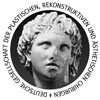
DGPRÄC
Deutsche Gesellschaft der Plastischen, Rekonstruktiven und Ästhetischen Chirurgen

ISAPS
International Society of Aesthetic Plastic Surgery

IPRAS
International Confederation for Plastic, Reconstructive and Aesthetic Surgery

Inquire now
A personal conversation provides clarity most quickly. Our communication will be treated professionally and discreetly!


